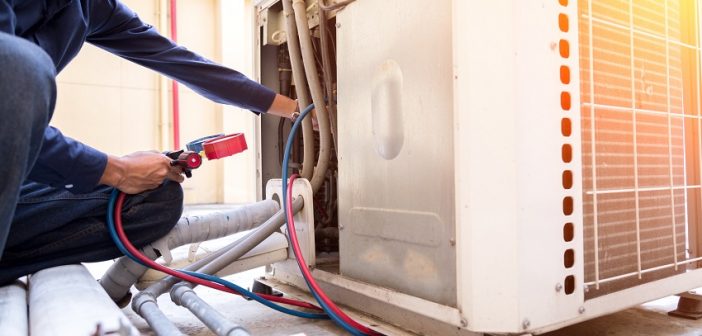When looking to purchase a new HVAC system for your home, you should ensure it is sized correctly.
Choosing the ideal size HVAC system can be challenging. For instance, an air conditioning system that is too small will not effectively regulate your home’s temperature. On the other hand, if you purchase an oversized air conditioner, you will end up wasting a lot of energy and money.
Additionally, an HVAC system that is too big for your home may not be as efficient and is likely to experience de-humidification problems. It can also lead to short-cycling, whereby the air conditioner keeps turning on and shutting off.
Here is how to know what size HVAC system you need for your home.
Approximate Calculations
You can estimate the size of your HVAC system by doing some simple calculations. First, you have to determine the square footage of your home. You can measure the floor space of each room using a tape measure. Multiply each room’s width and length to determine its square footage and then add all of them together.
Secondly, you have to determine the British Thermal Unit (BTU). BTU is the unit used to calculate the amount of energy used during heating and cooling. According to experts, the amount of energy required to cool your home’s single square foot is approximately 25 BTUs. With that in mind, you can multiply your home’s square footage by 25 BTUs to determine the overall base BTU.
When estimating the size of your air conditioning system, you need to account for high ceilings. For instance, if the ceiling is more than 8 feet, you need to multiply the base BTU by 25%.
Once you determine the base BTU, it becomes easier to choose the right size for your HVAC system and determine the heating units your home requires.
Request a Manual J Calculation
According to Skokie HVAC, A manual J calculation is the best, precise, and professional way to determine your home air conditioner’s right size. The purpose of a manual J calculation is to calculate the heating and cooling needs of your home. Before purchasing a new HVAC system, your preferred contractor needs to perform a manual J load calculation.
Many companies offer energy audit services. Therefore, finding the most reliable can be challenging. Not performing a proper energy audit can lead to you purchasing an undersized or an oversized air conditioner. Regardless, you will have wasted your time, energy, and money.
To hire the right energy auditor, make sure that you do the following:
- Ask for referrals and recommendations from friends and relatives.
- Confirm with the Better Business Bureau if there are any complaints against the auditor.
- Ensure that they use a calibrated blower door.
- Ensure that they conduct thermographic inspections.
- Check the residential energy services network for certified auditors.
Even though the calculations can be done manually, it is advisable to hire professionals with the necessary tools and who provide precise calculations. However, there are several factors that contractors consider when Manual J Calculations. Here are some of the factors to consider.
- The number of individuals residing in your space- the more the number of people living in your home, the larger the HVAC system.
- Square footage- calculating your home’s square footage is the first step to determining the base BTU, which helps you choose the ideal air conditioner. If the square footage is large, you will need a larger air conditioner.
- Climate zone- the size of the air conditioner you purchase will depend on your geographical area’s weather.
- Natural sunlight-incorporating natural light reduces HVAC costs. This can be achieved by adding more windows.
- Quality of insulation- you will require a small-sized HVAC system if your home is well insulated.
- Ductwork- an air duct is responsible for controlling temperature, air quality, and airflow in your home.
- The number and style of windows- you will need a small-sized air conditioner if your home has many windows that allow adequate air circulation.
- Heat generating appliances- if you have several heat-generating devices, the chances are that you will need an HVAC system with a larger output.
It doesn’t matter what method you decide to choose. The aim is to calculate the number of BTUs you require to heat and cool your home comfortably.
What You Should Expect During a Manual J Calculation
There are several things that you need to expect when a professional contractor or an energy auditor comes to your home to do a load calculation.
Taking Measurements
The first thing to expect is that the contractor is going to take the necessary measurements. Even though some recommend an ideal HVAC system based on the “rules of thumb,” experts use real data to suggest the right size for the HVAC system you need for your home. It is why you are likely to see a contractor measure every room, ceiling height, window sizes, and insulation R-values.
Some other factors that determine your load calculation include:
- the basement beneath your house.
- The type of roof.
- The attic. A contractor will identify whether it is air sealed or insulated with batts.
A Blower Door Test
A blower door test is necessary when performing manual J load calculations. The test reveals how much air is infiltrated in your home under different conditions. Air infiltration determines the amount of heat your HVAC system will need to remove or produce.
The chances are that your home will need a large HVAC system if your home has more air infiltration. On the other hand, if your home has less air infiltration, you will require a smaller HVAC system.
The only time a contractor can avoid this step is when the home already has other multiple air conditioning systems or if there is minimal air filtration.
The above are methods you can use to determine the right size for your HVAC system. Even though you can accomplish them yourself, it is advisable to seek a professional contractor’s help. Ensure that they have the necessary tools to calculate the base BTU of your home. Avoid contractors who depend on estimations. Do not exceed 15% over the recommended BTUs.




